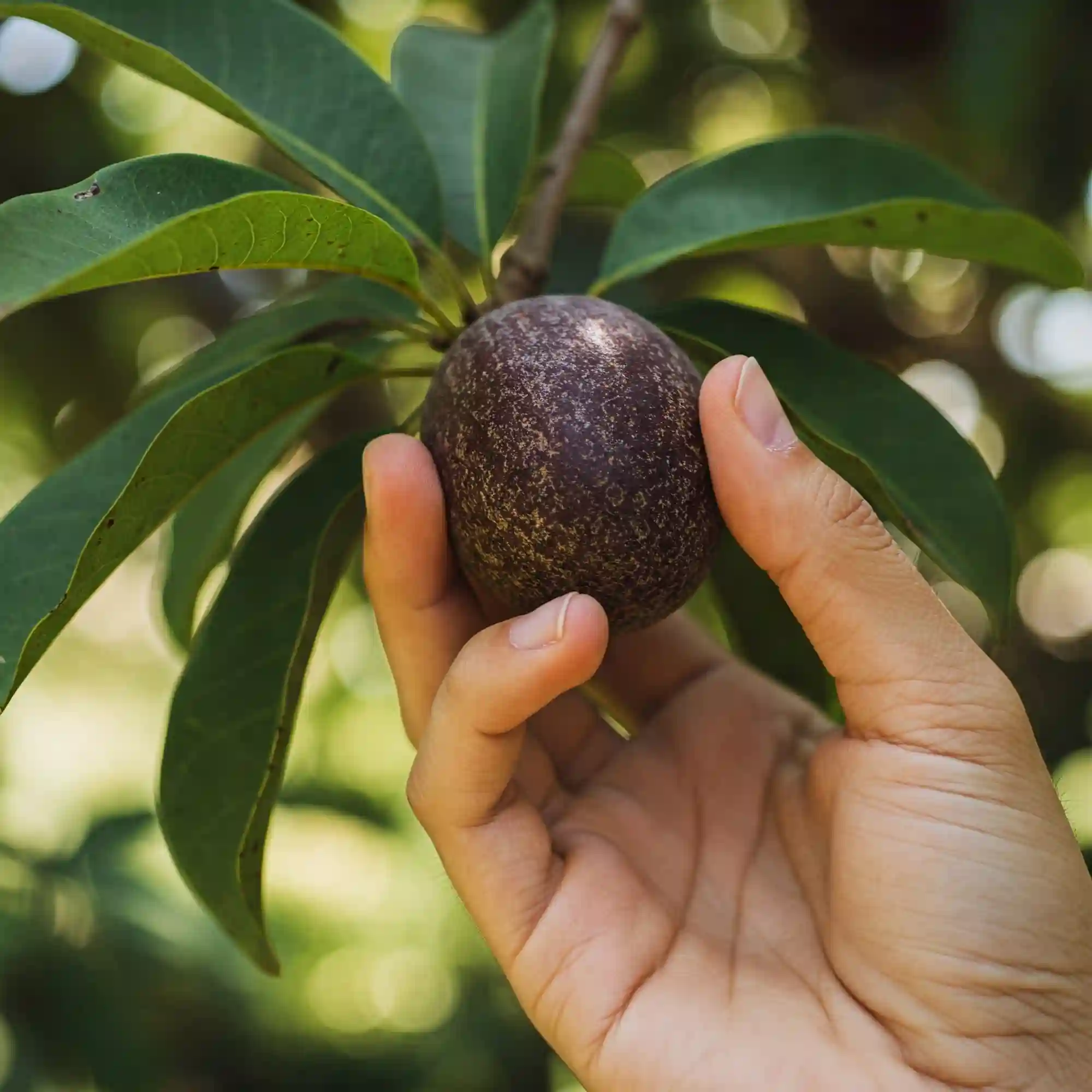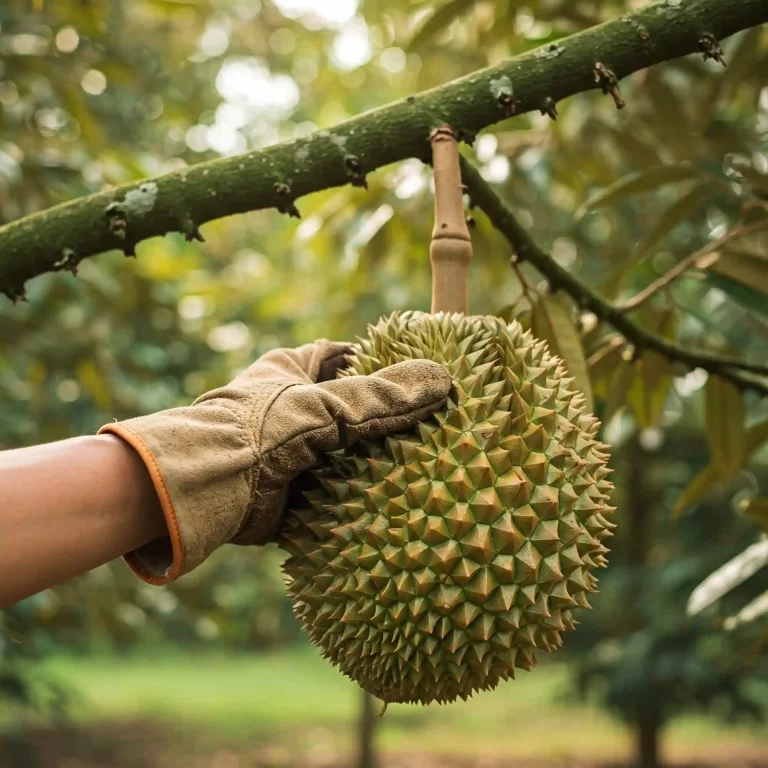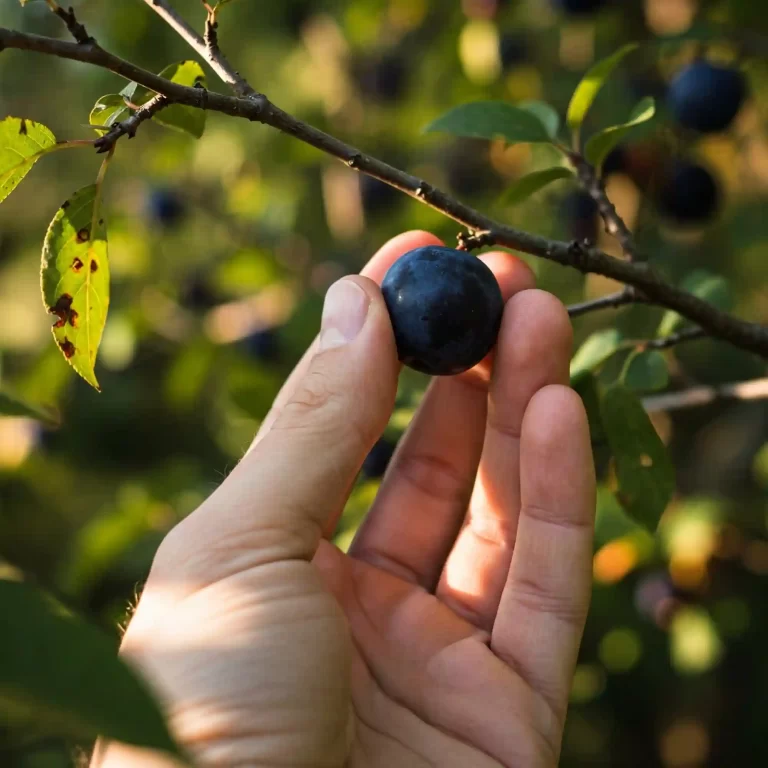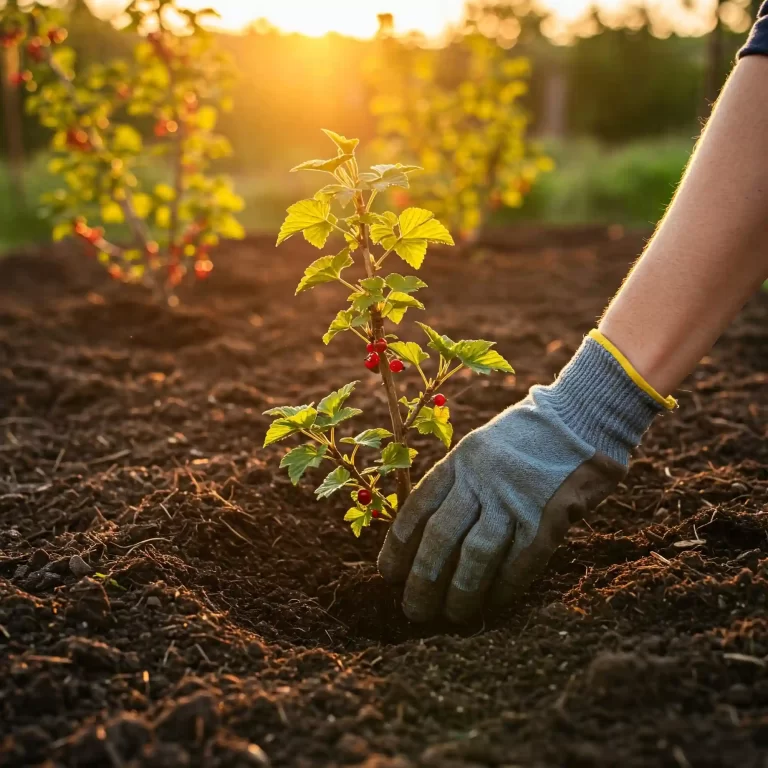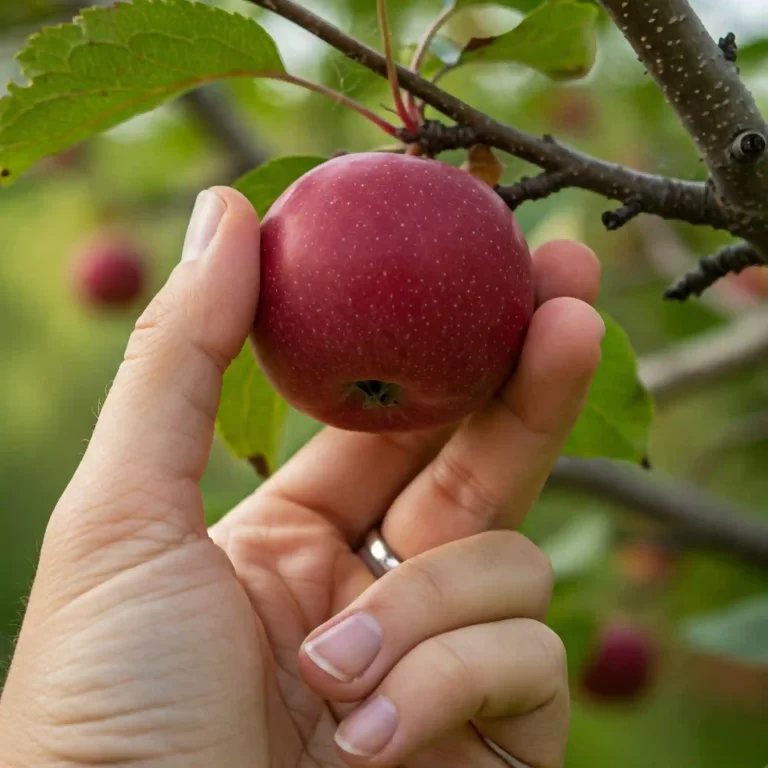Have you ever dreamt of biting into a creamy, chocolate-flavored fruit straight from your own backyard? You know, the kind that feels like a decadent dessert but is actually grown on a tree? The Black Sapote, with its unique “chocolate pudding fruit” moniker, holds that promise. But, you’ve probably encountered the challenge of getting your sapote tree to thrive. Maybe the fruit doesn’t set, or the tree seems stunted. That’s frustrating, isn’t it? You invest time and effort, expecting a fruitful yield, only to be met with disappointment. I understand that feeling. I’ve been there myself. But don’t worry, because I’m here to guide you through the ins and outs of growing Black Sapote fruits successfully. With the right knowledge and techniques, you can transform your garden into a tropical oasis and enjoy the sweet rewards of your labor.
Choosing the Right Location for Your Black Sapote Tree
When embarking on the journey of growing Black Sapote fruits, the first and most crucial step is selecting the perfect location for your tree. You might think any sunny spot will do, but Black Sapote trees have specific needs that, if met, will significantly impact your yield and the overall health of your tree.
Sunlight is the lifeblood of any fruit-bearing tree, and Black Sapote is no exception. These trees thrive in full sun, requiring at least 6 to 8 hours of direct sunlight each day. I’ve found that positioning them where they receive morning sun is particularly beneficial, as it helps dry the leaves and reduce the risk of fungal diseases. If you’re in a region with less intense sunlight, you can still succeed, but be sure to choose the sunniest spot in your garden.
Temperature and humidity also play a vital role. Black Sapote trees are native to tropical and subtropical climates, where temperatures remain consistently warm. They dislike frost and will suffer damage if exposed to freezing conditions. Ideally, you should aim for temperatures between 65°F and 90°F (18°C and 32°C). High humidity is another factor to consider. These trees love moist air, mimicking their natural habitat. If you live in a dry region, you might need to increase humidity around the tree by misting it regularly or placing it near a water feature.
Strong winds can be detrimental, especially to young Black Sapote trees. These trees have shallow root systems and can be easily damaged or uprooted by high winds. Therefore, it’s essential to select a location that offers some protection from strong gusts. This could be near a fence, a wall, or among other trees that can act as windbreaks.
Even within your garden, you can find microclimates that are more suitable for Black Sapote trees. For instance, a south-facing wall can radiate warmth and create a slightly warmer microclimate. Similarly, an area with good air circulation can help prevent fungal diseases.
I’ve learned from experience that careful location selection can make a world of difference. When I first planted my Black Sapote tree in a shaded area, it struggled to produce fruit. But once I relocated it to a sunnier spot, it flourished. You, too, can achieve this success by paying close attention to the specific needs of your tree.
Here are some key factors to remember:
- Sunlight: Minimum 6-8 hours of direct sunlight daily.
- Temperature: 65°F to 90°F (18°C and 32°C).
- Humidity: High humidity is preferred.
- Wind: Protection from strong winds.
- Microclimates: Utilize warm, sheltered areas in your garden.
By carefully considering these factors, you’ll provide your Black Sapote tree with the ideal environment to thrive and produce an abundance of delicious fruit.
Preparing the Soil for Your Black Sapote Tree
Just as choosing the right location is crucial, so is ensuring your Black Sapote tree has the ideal soil conditions for optimal growth. These trees have specific preferences that can significantly influence their health and fruit production.
Black Sapote trees thrive in well-drained soil that is rich in organic matter. The ideal pH range for these trees is between 6.0 and 7.0, which is slightly acidic to neutral. Soil that is too acidic can hinder nutrient uptake, while excessively alkaline soil can lead to nutrient deficiencies.
To improve soil quality, I highly recommend incorporating organic matter such as compost, well-rotted manure, or leaf mold. These amendments not only improve drainage but also provide essential nutrients and enhance soil structure. Aim for a depth of at least 12 inches of well-amended soil before planting your Black Sapote tree.
If you have heavy clay soil, consider amending it with sand or perlite to improve drainage. Similarly, if your soil is sandy, incorporate organic matter to increase its water-holding capacity. You can also conduct a soil test to determine the specific nutrient levels and pH of your soil. This information will help you tailor your soil preparation accordingly.
For those of you who prefer container gardening, you can use a well-draining potting mix specifically formulated for fruit trees. Ensure the container has adequate drainage holes to prevent waterlogging, which can be detrimental to the tree’s health.
Remember, the quality of the soil directly impacts the health and productivity of your Black Sapote tree. By investing time and effort in preparing the soil, you’re laying the foundation for a thriving and bountiful tree.
Here are some key points to remember:
- Soil pH: 6.0 to 7.0 (slightly acidic to neutral).
- Drainage: Well-drained soil is essential.
- Organic Matter: Incorporate compost, manure, or leaf mold.
- Soil Amendments: Amend clay soil with sand or perlite, and sandy soil with organic matter.
- Container Gardening: Use well-draining potting mix and ensure adequate drainage.
By following these guidelines, you can create a healthy and supportive environment for your Black Sapote tree to flourish.
Planting Your Black Sapote Tree
Now that you’ve selected the perfect location and prepared the soil, it’s time to plant your Black Sapote tree. Planting is a crucial step that sets the stage for the tree’s future growth and productivity.
The best time to plant Black Sapote trees is during the early spring or late fall when the weather is mild. Avoid planting during extreme heat or cold, as this can stress the tree and hinder its establishment.
Whether you’re planting a bare-root tree or one in a container, the process is relatively straightforward. If you’re planting a bare-root tree, soak the roots in water for a few hours before planting to rehydrate them.
Here’s a step-by-step guide to planting your Black Sapote tree:
- Dig a hole: The hole should be twice as wide and slightly deeper than the root ball of the tree.
- Amend the soil: Mix some of the excavated soil with compost or other organic matter and fill the bottom of the hole with this amended soil.
- Place the tree: Gently place the tree in the hole, ensuring the root ball is level with the surrounding soil.
- Backfill the hole: Backfill the hole with the remaining soil, firming it gently around the roots.
- Water thoroughly: Water the tree deeply to settle the soil and ensure good contact with the roots.
- Mulch: Apply a layer of organic mulch, such as wood chips or shredded bark, around the base of the tree. This helps to retain moisture, suppress weeds, and regulate soil temperature.
When planting multiple Black Sapote trees, it’s essential to maintain adequate spacing between them. Allow at least 20 to 30 feet between trees to ensure they have ample space to grow and develop.
Proper planting is the foundation for a healthy and productive Black Sapote tree. By following these steps and paying attention to detail, you’ll set your tree up for success.
Key points to remember:
- Timing: Plant in early spring or late fall.
- Preparation: Soak bare-root trees in water before planting.
- Hole depth: Dig a hole twice as wide and slightly deeper than the root ball.
- Soil amendment: Mix excavated soil with compost.
- Watering: Water thoroughly after planting.
- Mulching: Apply a layer of organic mulch.
- Spacing: Maintain adequate spacing between trees.
By following these guidelines, you’ll ensure a smooth transition for your Black Sapote tree as it begins its journey in your garden.
Watering Your Black Sapote Tree
Water is essential for the growth and development of your Black Sapote tree. However, it’s crucial to strike the right balance, as both under-watering and over-watering can have detrimental effects.
During the first year after planting, consistent watering is vital to establish a strong root system. Aim to water your Black Sapote tree deeply and thoroughly once or twice a week, depending on rainfall and soil moisture. Deep watering encourages the roots to grow deeper into the soil, making the tree more drought-tolerant in the future.
As your tree matures, it will become more drought-tolerant. However, during prolonged dry periods, you’ll need to provide supplemental irrigation. Monitor the soil moisture regularly and water deeply whenever the top few inches of soil feel dry.
Over-watering can be just as harmful as under-watering. Waterlogged soil can lead to root rot, a serious fungal disease that can kill your tree. Always ensure that the soil drains well and avoid watering too frequently.
Mulching around the base of your tree can help conserve soil moisture and reduce the frequency of watering. Apply a layer of organic mulch, such as wood chips or shredded bark, around the base of the tree, keeping it a few inches away from the trunk.
Remember, the watering needs of your Black Sapote tree will vary depending on factors such as rainfall, temperature, and soil type. Observe your tree closely and adjust your watering schedule accordingly.
Here are some key points to remember:
- Deep watering: Water deeply and thoroughly, especially during the first year.
- Frequency: Water once or twice a week, depending on rainfall and soil moisture.
- Avoid over-watering: Ensure the soil drains well to prevent root rot.
- Mulching: Apply a layer of organic mulch to conserve soil moisture.
- Observation: Monitor your tree and adjust watering schedule based on its needs.
By providing your Black Sapote tree with the right amount of water, you’ll support its growth and ensure it produces a bountiful harvest of delicious fruit.
Fertilizing Your Black Sapote Tree
Fertilizing your Black Sapote tree is essential for providing it with the nutrients it needs for optimal growth and fruit production. However, it’s crucial to use the right type and amount of fertilizer to avoid over-fertilizing, which can damage the tree’s roots and even lead to fruit drop.
I recommend using a balanced fertilizer with a ratio of N-P-K (Nitrogen-Phosphorus-Potassium) of 10-10-10 or a slow-release fertilizer formulated specifically for fruit trees. Organic fertilizers, such as compost, manure, or bone meal, can also be beneficial.
The timing and frequency of fertilization will depend on the age of your tree and its growth stage. Young trees typically require more frequent fertilization than mature trees. A general guideline is to fertilize your Black Sapote tree in early spring, before new growth begins, and again in mid-summer.
It’s always a good practice to conduct a soil test to determine the nutrient levels in your soil. This will help you identify any deficiencies and tailor your fertilization program accordingly. If you find that your soil is deficient in certain nutrients, you can apply supplemental fertilizers to address those specific needs.
When applying fertilizer, be sure to spread it evenly around the base of the tree, keeping it a few inches away from the trunk to avoid damaging the bark. Water the tree thoroughly after fertilizing to help the nutrients reach the roots.
Remember, over-fertilization can be harmful to your Black Sapote tree. Always follow the recommended application rates on the fertilizer label and avoid excessive fertilization.
Here are some key points to remember:
- Fertilizer type: Use a balanced fertilizer or organic options.
- Timing: Fertilize in early spring and mid-summer.
- Soil testing: Conduct a soil test to determine nutrient needs.
- Application: Apply fertilizer evenly around the base of the tree.
- Watering: Water thoroughly after fertilizing.
- Avoid over-fertilization: Follow recommended application rates.
By fertilizing your Black Sapote tree properly, you can ensure it receives the necessary nutrients for healthy growth and abundant fruit production.
Pollination Techniques for Black Sapote Trees
Pollination is a crucial step in the fruit-setting process of Black Sapote trees. Without proper pollination, you won’t be able to enjoy the delicious chocolate pudding fruit.
Black Sapote trees are self-incompatible, meaning they cannot self-pollinate. This means you’ll need to plant at least two different varieties of Black Sapote trees within pollinating distance of each other to ensure successful fruit set.
If you only have one Black Sapote tree, you can resort to hand pollination. This involves manually transferring pollen from the male flower (staminate flower) to the female flower (pistillate flower) using a small brush or cotton swab. It’s best to do this in the morning on a warm, sunny day when the flowers are receptive.
Planting multiple Black Sapote trees is generally the more practical approach, as it allows for natural cross-pollination by insects such as bees and butterflies. Be sure to choose compatible varieties that flower at the same time.
In addition to planting multiple trees, you can also encourage natural pollination by planting bee-friendly flowers and herbs around your Black Sapote trees to attract pollinators.
Remember, successful pollination is essential for fruit set. By employing these techniques, you can increase the chances of your Black Sapote trees producing a bountiful harvest.
Here are some key points to remember:
- Self-incompatibility: Black Sapote trees cannot self-pollinate.
- Hand pollination: Transfer pollen manually using a brush or cotton swab.
- Planting multiple trees: Plant at least two different varieties for cross-pollination.
- Attract pollinators: Plant bee-friendly flowers and herbs.
By implementing these pollination strategies, you can ensure that your Black Sapote trees have the best possible chance of producing a fruitful harvest.
Pruning Your Black Sapote Tree
Pruning is an essential aspect of Black Sapote tree care. It helps maintain the tree’s shape, encourages fruit production, and removes any dead or diseased wood.
The best time to prune your Black Sapote tree is during the dormant season, typically in late winter or early spring before new growth begins. Avoid pruning during the growing season, as this can stress the tree and reduce fruit production.
When pruning, use clean and sharp pruning shears to make clean cuts. Avoid leaving any jagged edges, as these can be entry points for diseases.
Here are some basic pruning techniques for Black Sapote trees:
- Remove dead or diseased wood: This helps to prevent the spread of diseases and improves the overall health of the tree.
- Thin out overcrowded branches: This allows more sunlight and air to reach the remaining branches, promoting healthier growth and fruit production.
- Shape the tree: Pruning can help you shape your Black Sapote tree into a desired form, such as an open vase shape, which allows for better light penetration and air circulation.
- Remove water sprouts and suckers: These are vigorous shoots that grow from the trunk or main branches. They can be unsightly and compete with the main branches for nutrients and water.
Always use caution when pruning your Black Sapote tree. If you are unsure about how to prune, it’s best to consult with a qualified arborist or tree expert.
Remember, proper pruning is an essential part of Black Sapote tree care. By following these guidelines and practicing safe pruning techniques, you can maintain the health and productivity of your tree for years to come.
Here are some key points to remember:
- Timing: Prune during the dormant season, in late winter or early spring.
- Clean cuts: Use clean and sharp pruning shears.
- Remove dead or diseased wood: Improve tree health and prevent disease spread.
- Thin out overcrowded branches: Promote better light and air circulation.
- Shape the tree: Create an open vase shape for optimal growth.
- Remove water sprouts and suckers: Prevent competition for nutrients and water.
By following these pruning tips, you can ensure that your Black Sapote tree remains healthy, productive, and aesthetically pleasing.
Protecting Your Black Sapote Tree from Pests and Diseases
While Black Sapote trees are generally hardy, they can be susceptible to certain pests and diseases. Regular monitoring and proactive measures can help you protect your tree and ensure a healthy harvest.
Common Pests:
- Fruit Flies: These are a common problem, especially during the fruiting season. Fruit flies can lay eggs in the developing fruit, causing it to rot. You can protect your fruit by covering it with netting or using fruit fly traps.
- Scale Insects: These tiny insects attach themselves to the branches and suck sap from the tree, weakening it. You can control scale insects by manually scraping them off the tree or using insecticidal soap.
- Aphids: These small, sap-sucking insects can infest young leaves and shoots. You can control aphids by spraying them with a strong jet of water or using insecticidal soap.
Common Diseases:
- Root Rot: This fungal disease can occur in poorly drained soils. Symptoms include yellowing leaves, wilting, and stunted growth. To prevent root rot, ensure that your tree is planted in well-drained soil and avoid overwatering.
- Fungal Leaf Diseases: These diseases, such as anthracnose and powdery mildew, can cause leaf spots, discoloration, and leaf drop. You can control fungal diseases by improving air circulation around the tree and using fungicides.
Preventative Measures:
- Proper Sanitation: Keep the area around your Black Sapote tree clean and free of debris, as this can harbor pests and diseases.
- Cultural Practices: Provide your tree with optimal growing conditions, including adequate sunlight, water, and fertilization.
- Regular Monitoring: Regularly inspect your tree for signs of pests and diseases. Early detection is key to effective treatment.
Pest and Disease Control:
- Organic Methods: Use organic methods such as insecticidal soap, neem oil, or horticultural oil to control pests.
- Chemical Control: If organic methods are ineffective, you can use chemical pesticides. However, always follow the instructions on the label carefully and choose products that are safe for pollinators.
By implementing these preventative measures and taking prompt action to address any pest or disease issues, you can protect your Black Sapote tree and ensure a healthy and productive harvest.
Remember, early detection and prompt action are key to effectively managing pests and diseases. By staying vigilant and taking the necessary steps, you can enjoy the fruits of your labor and savor the unique flavor of your homegrown Black Sapote.
Harvesting and Enjoying Your Black Sapote Fruits
Now that you’ve nurtured your Black Sapote tree and ensured its health, it’s time to reap the rewards of your efforts. Harvesting and enjoying your delicious fruit is the culmination of all your hard work.
Black Sapote fruits typically ripen from late summer to early fall. However, the exact timing can vary depending on your location and the specific variety of your tree.
Signs of Ripeness:
- Color: The skin of the fruit will turn from green to a deep, dark brown or even black when ripe.
- Texture: Ripe Black Sapote fruits will feel slightly soft to the touch, similar to an avocado.
- Aroma: Ripe fruits often emit a subtle sweet aroma.
Harvesting Techniques:
- Gentle Handling: Gently twist and pull the fruit from the tree, using a slight twisting motion. Avoid pulling too hard, as this can damage the tree.
- Handle with Care: Black Sapote fruits are delicate and can bruise easily. Handle them carefully to avoid damage.
Storing and Enjoying:
- Immediate Consumption: If you plan to eat the fruit immediately, you can simply cut it open and scoop out the flesh with a spoon.
- Refrigeration: Ripe Black Sapote fruits can be stored in the refrigerator for up to a week.
- Freezing: You can also freeze the fruit pulp for later use.
Culinary Uses:
- Fresh Fruit: Enjoy the Black Sapote fruit fresh, straight from the tree. Its creamy texture and unique chocolate flavor make it a delicious treat.
- Smoothies and Shakes: Blend the fruit into smoothies or shakes for a refreshing and nutritious beverage.
- Desserts: Use Black Sapote fruit in desserts such as pies, cakes, and ice cream.
- Sauces and Dips: The fruit can be used to make delicious sauces and dips.
By following these guidelines, you can harvest and enjoy your Black Sapote fruits at their peak ripeness. Remember to handle the fruit with care and explore the many ways to savor its unique flavor.
Troubleshooting Common Growing Problems
Even with the best care, you may encounter some challenges while growing Black Sapote trees. However, by understanding common problems and knowing how to address them, you can overcome these obstacles and continue to enjoy the rewards of your efforts.
Common Problems:
- Lack of Fruit Production: If your Black Sapote tree is not producing fruit, several factors could be contributing. Ensure that you have at least two compatible varieties for cross-pollination, and that the tree is receiving adequate sunlight and water.
- Leaf Yellowing: Yellowing leaves can indicate nutrient deficiencies, particularly iron or magnesium deficiency. You can address this by applying appropriate fertilizers or amending the soil.
- Stunted Growth: Stunted growth can be caused by various factors, including poor soil drainage, nutrient deficiencies, or pest and disease problems. Address any underlying issues to promote healthy growth.
- Fruit Drop: Premature fruit drop can be caused by various factors, including nutrient deficiencies, water stress, and pest infestations. Ensure that your tree is receiving adequate water and nutrients, and take steps to control pests.
Troubleshooting Tips:
- Observe your tree closely: Regularly monitor your tree for any signs of stress or problems.
- Address issues promptly: If you notice any problems, take steps to address them immediately.
- Seek expert advice: If you are unsure about how to address a particular issue, consult with a local arborist or a county extension agent.
By staying vigilant, addressing problems promptly, and seeking expert advice when needed, you can overcome common growing challenges and ensure that your Black Sapote tree thrives.
FAQ
Here are answers to some frequently asked questions about growing Black Sapote trees:
Q: What is the best time of year to plant a Black Sapote tree?
A: The best time to plant Black Sapote trees is during the early spring or late fall when the weather is mild. Avoid planting during extreme heat or cold, as this can stress the tree and hinder its establishment.
Q: How often should I fertilize my Black Sapote tree?
A: Young trees typically require more frequent fertilization than mature trees. A general guideline is to fertilize your Black Sapote tree in early spring, before new growth begins, and again in mid-summer. Use a balanced fertilizer with a ratio of N-P-K (Nitrogen-Phosphorus-Potassium) of 10-10-10 or a slow-release fertilizer formulated specifically for fruit trees.
Q: How do I know if my Black Sapote fruit is ripe?
A: Ripe Black Sapote fruits will have a deep, dark brown or black skin. They will also feel slightly soft to the touch, similar to an avocado, and may emit a subtle sweet aroma.
Q: What should I do if my Black Sapote tree is not producing fruit?
A: Ensure that you have at least two compatible varieties for cross-pollination. Check that the tree is receiving adequate sunlight and water. Also, make sure to address any nutrient deficiencies or pest and disease problems.
Q: What should I do if my Black Sapote tree has yellowing leaves?
A: Yellowing leaves can indicate nutrient deficiencies, particularly iron or magnesium deficiency. You can address this by applying appropriate fertilizers or amending the soil. It could also be a symptom of overwatering or poor drainage.
Q: How do I prevent root rot in my Black Sapote tree?
A: Plant your tree in well-drained soil and avoid overwatering. Mulching around the base of the tree can also help to improve drainage and reduce the risk of root rot.
Q: What are some common pests that affect Black Sapote trees?
A: Common pests include fruit flies, scale insects, and aphids. You can control these pests by using organic methods such as insecticidal soap or neem oil, or by using chemical pesticides if necessary.
Q: How do I store harvested Black Sapote fruits?
A: Ripe Black Sapote fruits can be stored in the refrigerator for up to a week. You can also freeze the fruit pulp for later use.
Remember, these are just a few of the common questions related to growing Black Sapote trees. If you have any further questions or concerns, don’t hesitate to consult with a local arborist or a county extension agent for expert advice.
Conclusion:
Growing Black Sapote fruits can be a rewarding experience, but it requires knowledge, patience, and dedication. By following the tips and techniques outlined in this guide, you can increase your chances of success and enjoy the unique flavor of this delicious fruit. Remember to choose the right location, prepare the soil, and provide proper care for your tree. By observing your tree closely, addressing any issues promptly, and enjoying the process, you can cultivate a healthy and productive Black Sapote tree that will provide you with years of enjoyment.
